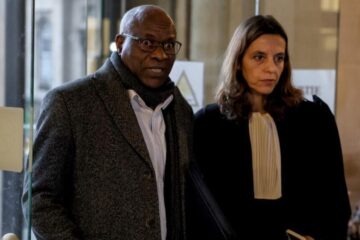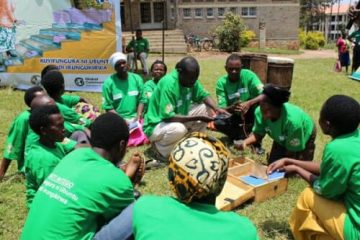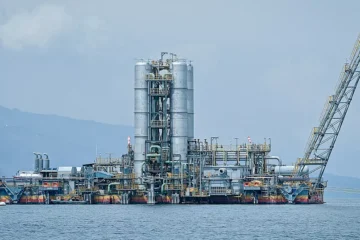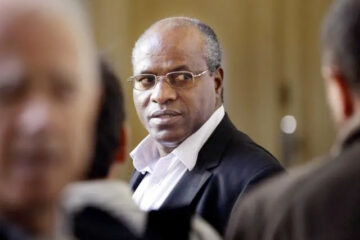For as long as Jacqueline Murekatete could remember, the mountains of Kayonza had never been completely bare of vegetation and the region had never experienced the severity of drought and famine that has plagued the area in recent years.

t
Each passing year has brought harsher conditions, with the sun growing more intense and crops wilting before they have a chance to mature. The cause of these worsening conditions remained a mystery to residents, leading some to believe that they were facing divine retribution, interpreting it as God’s punishment.”
“As a child, I remember the abundant rains,” says Murekatete, a resident of Kabare sector in Kayonza district. But starting around 2002, the sun began to scorch the land. We noticed the changes and told ourselves that the times had shifted, believing that it was God’s doing. Back then, we farmed and harvested in abundance.” She said.
“We reaped countless bags of beans and sorghum from our fields, and harvested cassava, sweet potatoes, and bananas from our thriving crops. The rains were reliable, and the sun shone brightly in its proper season. Thanks to the nearby national park, the air was fresh and the clouds hung low, making the environment feel alive and refreshing.” She added.
Murekatete, a mother of six and grandmother, together with her friends, make a daily journey from their home in Kabare sector to work on farms in Ndego sector, often walking for more than an hour.
The once-pristine forests vanished under the assault of illegal logging and the expanding need for agricultural land. Even Akagera National Park’s borders were not spared, leaving the once-verdant hills barren.
How it happened…
“They started by clearing the farms, cutting down trees to tidy up the land. The trees were burned, some to produce charcoal and others just bush clearing the area. This entire region, including what was part of Akagera National Park, used to be forested.” Says Jean Baptiste Kahabaye, a man in his 60s and native of Kabare sector in Kayonza district.

Born in the early 1960s, the young Kahabaye spent his days exploring dense woodlands, marveling at the towering trees, and listening to birds’ melodic calls. He learned farming from his father, cultivating fertile lands bordering the forests. The lush canopy provided shade and protection, allowing crops to thrive. The community lived in harmony with nature, respecting the delicate balance that sustained their way of life.

Kahabaye watched in despair as majestic trees were reduced to stumps and the thriving ecosystem collapsed. With the protective cover gone, the soil became dry and unproductive, making it increasingly difficult for Kahabaye to cultivate and provide for his family.

Heading a larger family of eight, Kahabaye toils to keep the family fed. Carrying a hoe and a machete, he walks alongside his wife and two young children up the main road under the scorching midday sun. They come from the fields in villages located in Ndego sector, bordering their home in Gakonji village, he describes the situation in his village.
“By the 2000s, deforestation had reached alarming levels. Illegal charcoal production and mining left vast stretches barren and contributed to climate change, bringing unpredictable weather and prolonged droughts. My hope waned as I struggled to adapt to this harsh reality,” he observes.
He added: “In this region, we grow beans, maize, sorghum, and cassava. In the past, it was possible to harvest around a ton of sorghum per hectare, but now we struggle to yield even half of that. If we manage to harvest just two bags, we consider it a hard-earned success. Our lives here heavily depend on rain-fed agriculture, but with the lack of rain, our crops wither and fail to bear fruit. We are plagued by hunger and it overwhelms us year after year.”
According to global forest watch report, as of 2000, Rwanda had 498 kha of tree cover, accounting for 20 percent of its land area and <0.1 percent of the global total. In the Eastern Province, 78.8 kha of tree cover was recorded, and 16 percent of Rwanda’s land cover had >30 percent canopy density.

Between 2001 and 2023, Rwanda lost 46.2 kha of tree cover, marking a 9.3percent decrease since 2000 and contributing 32.6 Mt of CO₂e emissions. Humid primary forest decreased by 529 ha during this period, making up 1.2 percent of total tree cover loss. From 2021 to 2023, 42 percent of tree cover loss occurred within natural forests, equivalent to 2.33 kha and 1.17 Mt of CO₂e emissions. One region alone accounted for 57 percent of all tree cover loss in the country.


Scientific explanation
According to the International Union for Conservation of Nature- IUCN, Smallholder farmers in Rwanda’s Eastern Province, rely heavily on seasonal rainfall for their agricultural activities. Climate change and subsistence farming practices have increased the region’s vulnerability to droughts, leading to significant reductions in crop yields.
“To combat these challenges, integrated adaptation measures are necessary to improve the landscape’s resilience, support sustainable agricultural production, promote regional growth, reduce poverty, enhance resilience, and ensure food security.” UCN report said.
In 2021, the Government of Rwanda and IUCN secured USD 33.8 million from the Green Climate Fund to implement the Transforming Eastern Province through Adaptation project – TREPA. This six-year initiative aims to restore 60,000 hectares of drought-degraded landscapes across all districts of the Eastern Province, including Kayonza, through reforestation and other measures. It also seeks to enhance the resilience of 75,000 smallholder farmers.”

The TREPA annual performance report in 2023 states that the project was accelerated to achieve 30 percent overall progress. Of 61 actions, only 2 remain un-started, with the rest in advanced stages. The project restored 19,348 ha of degraded land by planting 9,799,435 native and introduced trees. TREPA interventions improved resilience for 77,114 beneficiaries (44,005 men, 33,109 women) and generated 34,570 jobs (20,217 men, 14,352 women) across activities like seedling preparation and maintenance.
Kayonza residents hope for the better future

Jean Bosco Harwanimbaga migrated to Rwinkwavu sector in Kayonza district in 2008 from northern Rwanda. Seeking greener pastures, he had learned that the land here was fertile, but drought issues became more evident after his arrival.

He noticed that people burned the hills to create grass for cattle, and as the population grew, they needed firewood, leading to deforestation and barren hills.


The TREPA project has since stepped in, planting trees on these hills to combat while creating jobs to the locals. Traditional tree species such as Eucalyptus and Grevillea, as well as other native and exotic trees, have been revived.

Harwanimbaga emphasizes the crucial role the community plays in safeguarding these forests from threats like grazing livestock. They hold onto the hope that, as the trees flourish again, rain will return.
Despite ongoing reforestation efforts, numerous challenges continue to impede progress.
Dr. Ange Imanishimwe, the Country Director of BIOCOOR, a local biodiversity conservation organization that specializes in biodiversity management, underscores that poverty forces many to rely on forest resources for their subsistence, leading to deforestation.

“Often, individuals plant trees only to cut them down prematurely for immediate needs. At the end of the day, trees will not be able to keep growing in good conditions, it can lead to trees stunting,” Dr. Imanishimwe notes.
“When trees are cut, it leads to bare mountains, reducing the amount of carbon sequestered. This can cause microclimatic changes and contribute to global warming. Illegal activities like hunting, unauthorized tree harvesting, and bush fires also threaten forests and wildlife, risking the extinction of some species. Additionally, the poor mindset towards conservation and inconsistent enforcement of laws further exacerbate the issue.” He says.
He added: “Despite these challenges, the future of Rwanda’s forests is promising due to strong political will, tree-planting campaigns, green economy initiatives, and investments from international organizations. Education is key, and if young people understand the importance of conservation and the impact of climate change, they will make better decisions in future.”
Dr. Imanishimwe recommends that people explore alternative livelihoods to reduce their over dependence on forest resources. He also suggests promoting businesses related to non-timber or forest products.
Local government involvement
The Kayonza district administration is actively working to combat deforestation and promote reforestation efforts. Hope Munganyinka, the Vice Mayor in charge of Finance and Development, highlights ongoing collaboration with various partners, including TREPA Project.
However, they face a significant challenge with dry spells that are difficult to mitigate. The newly planted trees face difficulty to survive. “When trees start to grow, the harsh sunlight often causes them to dry up,” Munganyinka explains. Despite this setback, the district remains comitted to restoring the region’s forests.
In addition to reforestation efforts the district is also cracking down on illegal mining activities. An officer from Rwanda Mines, Petroleum and Gas Board (RMB) stationed in the district conducts weekly inspections to identify any unauthorized activities, ensuring stricter enforcement of environmental regulations.

Dr. Valentine Uwamariya, the minister of Environment emphasizes the importance of afforestation in Eastern Province to address its sparse forest cover and limited rainfall.
“Planting both indigenous and exotic trees aims to improve precipitation and support nutrition through fruit-bearing and edible trees at homes and schools.” She said. She assured that the TREPA project is actively working to manage, monitor, and maintain the growth of newly planted trees to ensure long-term success.
The UN emphasizes that developing countries require $4 trillion annually to achieve climate action and biodiversity goals, such as ecosystem restoration and preventing species extinction.
Rwanda is addressing these priorities through projects like the $39.1 million Congo Nile Divide restoration project and the TREPA project in Eastern province, which focuses on afforestation and landscape restoration to combat deforestation and enhance biodiversity. Additionally, the $28 million Green City Kigali Project promotes sustainable urbanization, while the Climate and Nature Finance Strategy drives investments in biodiversity conservation and climate resilience.








